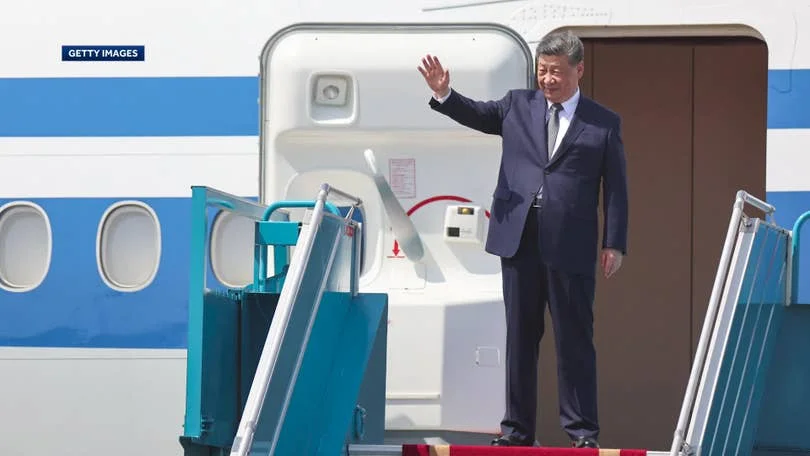
Is the Trade War Shifting? What China’s Moves Mean for the U.S.
As the escalating trade war between the United States and China continues to dominate headlines, recent developments suggest a potential shift in the dynamics of this complex relationship. With tariffs reaching an eye-watering 145% on certain Chinese goods, analysts are asking whether China's latest actions indicate a strategic pivot away from U.S. dependence.
In a recent statement conveyed by White House Press Secretary Karoline Leavitt, President Donald Trump emphasized that "the ball is in China's court" to de-escalate tensions. This remark underscores the U.S. stance that it holds the upper hand in negotiations, arguing that China is reliant on American consumers. "China needs to make a deal with us. We don’t have to make a deal with them," Leavitt asserted, pointing to the imbalance in their economic relationship.
However, the tide seems to be turning as China demonstrates increasing self-reliance. Following the announcement of a 120% tariff on small packages coming from the U.S., the Hong Kong Post Office declared it would cease accepting U.S. tariffs, effectively halting shipping operations. This action hints at Beijing’s readiness to manage without U.S. imports, thereby challenging the narrative that China is significantly dependent on American capital.
Amid these high-stakes negotiations, President Trump has taken proactive steps by ordering an investigation to assess the risks associated with the U.S. reliance on imported critical minerals. This move reflects concerns that foreign sources jeopardize national security and technological innovation in sectors vital to defense capabilities.
The repercussions of these trade tensions extend far beyond the U.S.-China bilateral relationship. Economists warn that American consumers will bear the brunt of the escalating tariffs, potentially driving up prices for everyday goods. Efforts to manage these complexities are evident, as the White House claims to have initiated discussions with over 75 countries, paving the way for 15 new trade deals focused on equitable commerce.
Simultaneously, tensions with other trade partners are rising, particularly with Mexico. The recent decision by the Commerce Department to end a program suspending tariffs on Mexican tomatoes has raised alarms, with Mexico threatening to implement similar tariffs on U.S. products such as chicken and pork. This scenario paints a troubling picture of a trade landscape fraught with conflict.
As China's president travels through various Asian nations promoting free trade, analysts are keenly watching these unfolding dynamics. China's strong economic growth, reportedly over 5% in the last quarter, and the appointment of a seasoned official as a top trade negotiator point to a country that is preparing to solidify its position in global markets.
In conclusion, as the U.S. continues to press for concessions from China, the real question remains: will China bend to U.S. demands, or will it leverage its emerging strengths to navigate this trade labyrinth independently? Each maneuver in this ongoing economic chess game has vast implications, not only for the two superpowers but also for global economic stability.
What do you think the next steps will be in the U.S.-China trade war? Share your thoughts in the comments below!
Related issues news
Does China have tariffs?
China Customs assesses and collects tariffs. Import tariff rates are divided into six categories: general rates, most-favored-nation (MFN) rates, agreement rates, preferential rates, tariff rate quota rates, and provisional rates. As a member of the WTO, imports from the United States are assessed at the MFN rate.
What are US tariffs on China?
China now faces up to a 245% tariff on imports to the United States as a result of its retaliatory actions.
What does China provide to the US?
In addition to apparel and footwear, the U.S. relies on China for computers, machinery, home appliances and electronics, Allianz Research said last week.